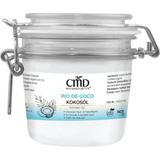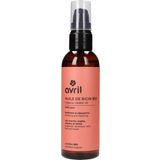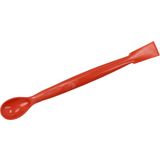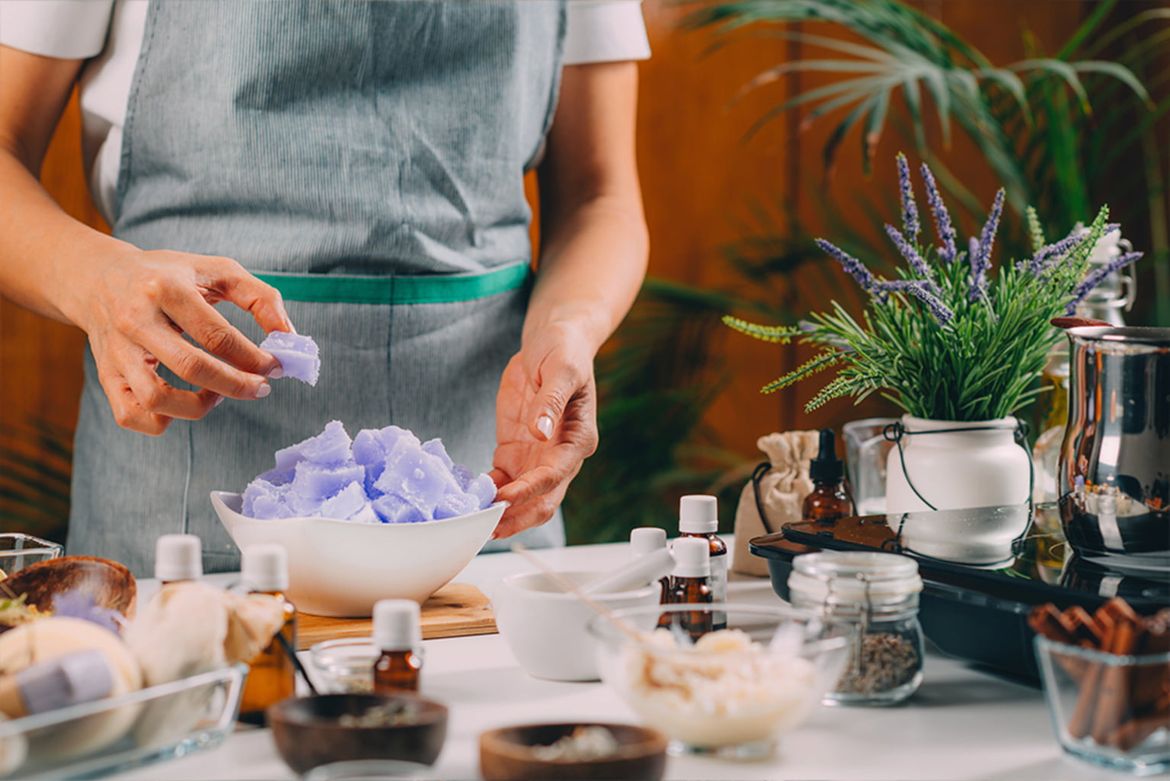Homemade Natural Soaps
Making homemade soaps is a good alternative to avoiding the use of synthetic components and always knowing exactly which ingredients they contain.
What's great about homemade soap is that one has the option of using food-grade plant oils and fats, thus guaranteeing a high-quality product. The oils supply the skin with a moisture and conditioning boost.
Glycerin is added to the composition which binds water and transforms homemade soaps into a first-grade cosmetic product. What's more, you can let your creativity run wild when it comes to selecting the desired scent for your homemade soap.
Preparation is Key
Prepping your work area and ensuring you are wearing protective gear is vital when it comes to the making of soap since essentially, you will be working with lye. We have listed a few useful tips below:
- Clear and clean your working area thoroughly, and always ensure that it is dry. Spread newspaper on the surface to protect it.
- Running water is necessary to quickly wash away any mishaps.
- Choose a well-ventilated room to work in to ensure that the vapours resulting from the making of soap are not inhaled.
- Ensure that you have all required utensils and ingredients at hand.
- It is vital to wear protective gear since you will be working with lye. We recommend safety goggles and lye-proof gloves to protect your eyes and hands. An apron will guard your clothing against any possible staining and a mask for your mouth is also favoured.
- Containers, utensils and countertops should not be made of aluminium since lye damages the metal. Only use tools that are made of plastic or stainless steel.
Basic Equipment
- a pot (best made of enamel) with a capacity of 4 - 5 litres
- a smaller pot
- a wooden spoon
- a mixer
- plastic, silicone or metal moulds. Note: metal moulds react negatively with lye. It is thus important to line metal moulds with clingwrap.
- plastic containers
- kitchen scale
- ladle
- soap thermometer
Warning: the equipment used to make the soap should no longer be used for cooking.
Olive Oil Soap
- 500 g olive oil
- 64 g NaOH
- 150 g water
Instructions:
- Dissolve the NaOH in water in small portions. Do not do this the other way around as it might lead to an "explosion".
- The mixture will start to heat up which is an indication of the reaction between the 2 components.
- Allow the mixture to cool down until a temperature of about 40°C is reached.
- Gently heat the oil in a double-boiler until it reaches approximately 40°C then mix it with the lye - ideally with a hand-held mixer.
- Once the mixture has taken on a pudding-like, creamy consistency it can then be poured into the moulds.
- Gently tap the mould on the surface or gently wiggle it to remove any air bubbles.
- Place a carton or towel over the mould to promote the gel phase.
- The soap can be removed after 24 hours and cut into shape. Always wear gloves when handling the soap at this stage.
- Store the soap in a cool, dark and dry place for about 8 weeks - the longer it is stored, the better.
- The deficit of lye is approximately 4%.
Fragrant Soap
- 200 g coconut oil
- 200 g olive oil
- 70 g hemp oil
- 30 g shea butter
- 71 g NaOH
- 160 g water
- 30 drops neroli essential oil
- 10 drops lavender essential oil
Instructions:
- Dissolve the NaOH in water in small portions. Do not do this the other way around as it might lead to an "explosion".
- The mixture will start to heat up which is an indication of the reaction between the 2 components.
- Allow the mixture to cool down until a temperature of about 40°C is reached.
- Melt the coconut oil in a double-boiler then add the other botanical oils. Mix the oils.
- Once the oil mixture has reached 40°C mix it with the lye ideally with a hand-held mixer.
- Add the essential oils once the mixture thickens and continue to mix.
- Once the mixture has taken on a pudding-like, creamy consistency it can then be poured into the moulds.
- Gently tap the mould on the surface or gently wiggle it to remove any air bubbles.
- Place a carton or towel over the mould to promote the gel phase.
- The soap can be removed after 24 hours and cut into shape. Always wear gloves when handling the soap at this stage.
- The deficit of lye is approximately 6 - 7%.
Important to note: each oil type has its own saponification factor. When swapping out oils it is essential to recalculate the amount of caustic soda used.
Related products
-
 4.6 (1206)
4.6 (1206)CMD Naturkosmetik Rio de Coco Organic Coconut Oil , 200 ml
-20%- For all skin types & dry hair
- With unsaturated fatty acids
- Delightful fragrance & cold-pressed
$9.75 $12.22 ($48.75 / l)Delivery by April 22
-
 $7.67 ($76.68 / l)
$7.67 ($76.68 / l)Delivery by April 22
-
 $3.40
$3.40Delivery by April 22
Magazine Articles:
Discover Ecco Verde:
-
Get at least 1 free sample
per order -
Delivery in 3 business days.
More than 19.800 products
We deliver worldwide to
more than 40 countries

